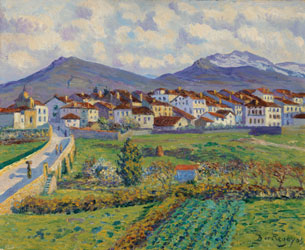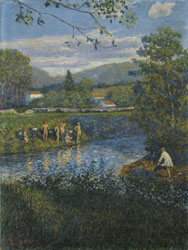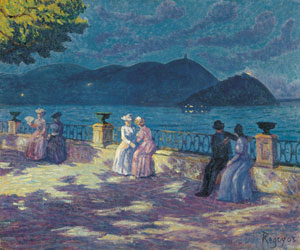- 01. The Artist
- 02. Early years
- 03. Black Spain
- 04. Divisionism
- 05. Impressionism
- 05. Barcelona, final period
Darío de Regoyos
The Impressionist Adventure
14 June 2014 - 13 October 2014

Lumière électrique (Electric Light)
1901 Oil on canvas, 73 x 59.5 cm Irungo Udala / Ayuntamiento de Irún
Impressionism
“Impressionism is an infinity capable of renewing itself always, by being the reflection of that other infinity—Nature—that is constantly transforming.” Darío de Regoyos, 1905
Landscape gave Regoyos the chance to explore the different de¬grees and nuances of light and colour. Ever loyal to Impressionist tenets, which he had absorbed first hand in Belgium and Paris, in his works he sought to express the immediate impression produced by the appearance of things. To this end he used a clear palette and a technique involving small, rapid and cutting brushstrokes.
A tireless traveller, Regoyos made regular work campaigns in the Basque Country between 1884 and 1912. Like other painters of the time, he believed that there were regions that more or less matched each artist’s sensibility, and he preferred to work in the fine light of Spain’s north-eastern coast, which allowed him to paint at any time of day.
Sunrises and sunsets, cloudy days, evening light, nocturnal scenes and gales and showers were his favourite subjects. Works such as Lumière electrique (Electric Light) (1901) and La Concha, Night-time (ca.1906) reveal this interest in reflecting different effects relating to light—rainbows, daytime or night time light, gas or electric light, etc.—which would reach their maximum expression in his depictions of the same subject at different times of the day, for example Morning in a Square in Burgos and A Square in Burgos at Dusk, both of 1906.


